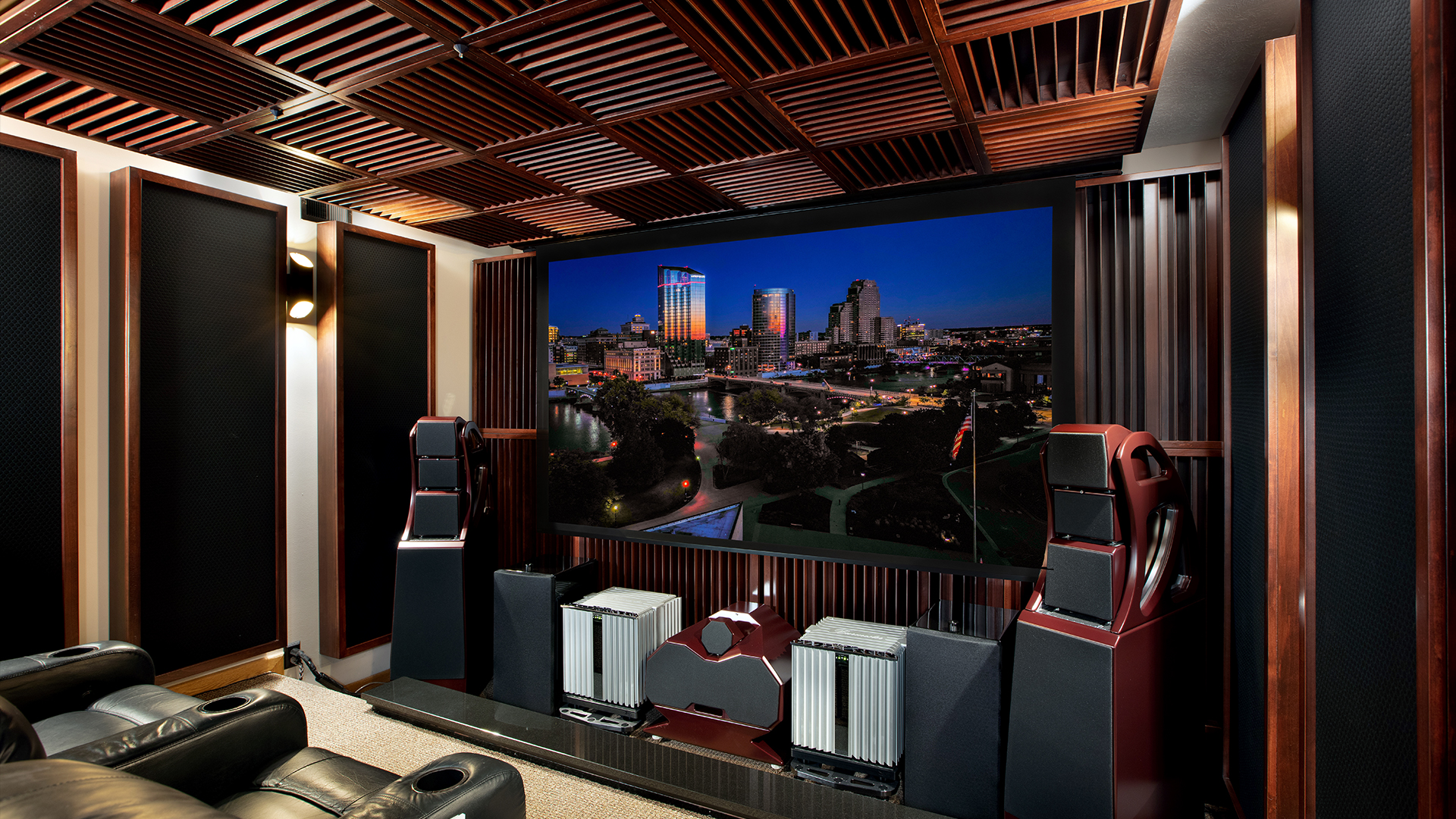Table of Contents

Understanding the Noise Floor in Home Theater Design
The search term for how to build a home theater has many variables to consider. Whenever one is building an environment where the goal is to hear voices and music whether it is how to build a home theater or any other room type, we want a room that is quiet. We want no outside noise entering our room and we do not want our music and voice leaving the room and disturbing others. This quality is termed noise floor.
We want the noise floor within our room so our music and voice can rise above the noise floor. The less noise we have to rise above within our room, the higher the room resolution we can achieve within the room. The lower the noise floor, the less noise we have to overcome by turning up the system gain and increasing amplitude.

How To Build A Home Theater: Addressing Noise Transmission
The search term for how to build a home theater must first start with noise transmission. We have noise from outside sources that can “bleed” into our room. The sound energy we create within our rooms can escape through our walls, floor, and ceiling and transmit to adjacent rooms. In order to minimize the transmission of noise from both sides of our walls, floor, and ceiling, we need to build a barrier.
A barrier is a structure that we build between a source of noise and a receiver of that noise. The barrier must be designed to attenuate the frequency and amplitude of the noise issue both outside and inside the room. Since we are looking at all the variables involved in how to build a home theater, we must first start with measuring the noise enemy. When it comes to noise, the old carpenter adage applies. We must measure twice and cut once. At Acoustic Fields, we have a process we send you to measure noise frequency and amplitude using your phone.

Measuring Noise Levels for Effective Barrier Design
We must measure noise over a seven day time frame. We need to measure twice a day over a seven day time frame. We need to know what days are the loudest and at what frequency the noise is at. Noise frequencies below 125 hz. are much more difficult to treat than noise issues above 125 hz. The barrier design for lower frequencies requires different material types with different densities than a barrier design for noise issues above 125 hz.
There can be a difference of 6″ – 10″ in room boundary space for lower frequency issues. This is why it is so critical to measure noise issues. With noise, you do not want to spend one dollar more than you have to for noise issues, since you are not going to recover that money. Barrier technology is a permanent construction fix. You are building a barrier with many material types that have mass and thus weight.

Incorporating Climate Control and Managing Pressure and Reflections
Once you have taken the noise numbers and decided on what barrier you will build, you must now focus on climate control. Local codes will tell you what r – value your area of the country will require to ward off temperature extremes. With noise and temperature control, we can now focus on the third wall of how to build a home theater.
The third wall would be the treatment wall inside the room that is designed to manage two main issues: pressure and reflections. Low frequency or ‘bass” is a pressure based distortion. Waves of lower frequency energy oscillate throughout our rooms from our instruments, speakers, or vocals. Some of that energy will “fit” into the dimensions of our rooms. Most will not. When it doesn’t it produces distortions which must be managed with the proper rate and level of absorption.

Optimizing Middle and High Frequencies for Clear Audio
Our next area of focus will be on the middle and high frequencies. When we focus on how to build a home theater, we must be concerned with two main issues. We will have lots of lower frequency energy with car crashes and explosions. The middle frequencies are where voice lies. Once we have a crash on our screen, we need to be able to hear the dialog from the actors without it being smothered by the car crash or explosion.
We must have all the frequencies that will be placed within the room from our home theater. To accomplish this intelligibility, we need to use the proper rate and level of absorption coupled with a balance of diffusion. For home theater, diffusion on the front, rear, and ceiling will produce a room that sounds twice as large as its physical dimensions along with good resolution of all music and voice.







